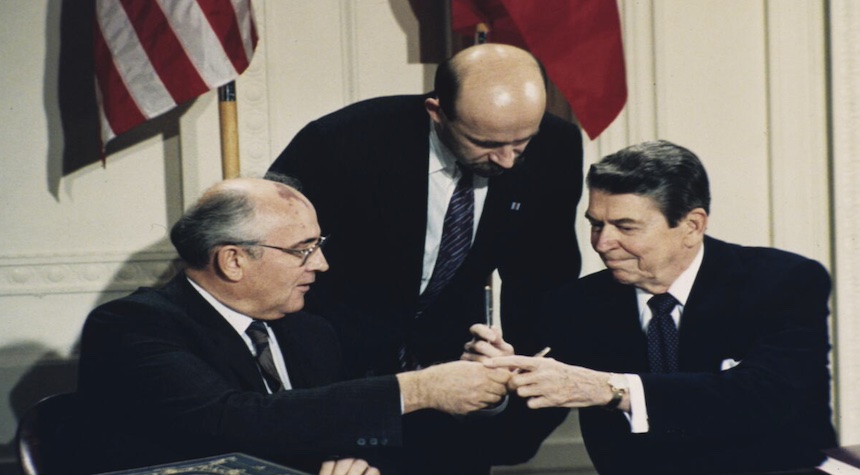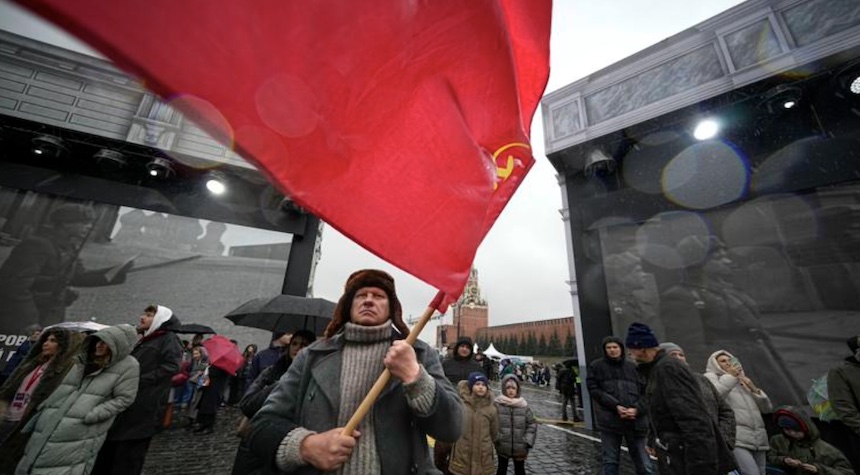In a very surprising and concerning development, the United States, along with NATO, mutually suspended their participation in a treaty signed in 1990 with Russia that would limit conventional military forces in Europe on Tuesday. This follows Russia’s formal withdrawal from the treaty as well, earlier Tuesday morning. This marks another landmark withdrawal from an arms treaty between the North Atlantic Treaty Organization and Russia.
In a Tuesday statement, NATO’s ruling body, the North Atlantic Council said that “Russia’s pullout is the latest of a series actions which systematically undermine Euro-Atlantic Security.”
The Conventional Forces in Europe Treaty was signed for the first time by NATO, the United States, and the Warsaw Pact along with the Soviet Union. The purpose of the treaty was to prevent either side from massing or staging their forces in central Europe, so as to gain numerical superiority over Soviet forces. The agreement also placed limits on the conventional forces of both sides, including the number of tanks, other armored vehicles, and aircraft that could be deployed from the Atlantic Ocean to the Ural Mountains, which separate western Russia from the Eurasian landmass.

NATO and the US will have more flexibility and leeway when it comes to moving their troops within NATO borders, with Russia or Russian-allied countries. They can also withhold information about deployments and other details for non-NATO nations that are aligned with Russia. The suspension of the treaty is set to take place on December 7, 2023. The State Department has called on NATO allies to react to Russia’s decision to withdraw from the treaty. However, it did not specify how they wanted them to do so.
Russia has been in violation or noncompliance with the treaty for a long time. It started in the late 1990s when it fought against Chechnya and continued until 2007 when they publically suspended the accordance of the treaty before their invasion of Georgia in 2008 and their capture of Crimea in 2014. Russia had given a six-month notice in May 2023, that it would withdraw from the treaty. Their exit is not a complete surprise.
The U.S. military will have more flexibility in deploying armored forces to the southern flank of NATO if the decision is made to suspend participation. The U.S., and its allies, have to follow a complicated set of procedures in order to rotate or deploy American troops there. This includes how many troops can be stationed at the northern flank of the alliance.

The U.S. European Command, as a result, has been in favor of leaving CFE for a long time, particularly since the Russians ignored the flank’s limitations since the 1990s, before suspending their participation in the Treaty in 2007. They will officially be out of the whole treaty on Tuesday.
The State Department reassured that NATO and the United States would continue to work together in order to avoid a new arms race. The fall of another treaty does, however, open the doors to further militarization in Eastern Europe and Europe. It opens the door to the possible introduction of nuclear weapons or other weapons that cause mass destruction in the war between Russia and Ukraine. It is important to note that the American nuclear forces are not currently on high alert, and no reports have indicated that they will be in the near or distant future.

The official stated that “together with our allies we are discussing ideas on how to work with partners responsible to continue efforts to reduce risk, prevent misperceptions and avoid conflicts, as well as build trust.”
All things considered, the recent move of all parties signatories of the CFE indicates a mutual shift away from trying to limit or reduce aggressive posturing or deployment of military force in Europe. This raises the implied or explicit threat of an escalation in tensions between NATO, Russia, and the ongoing conflict in Ukraine.


